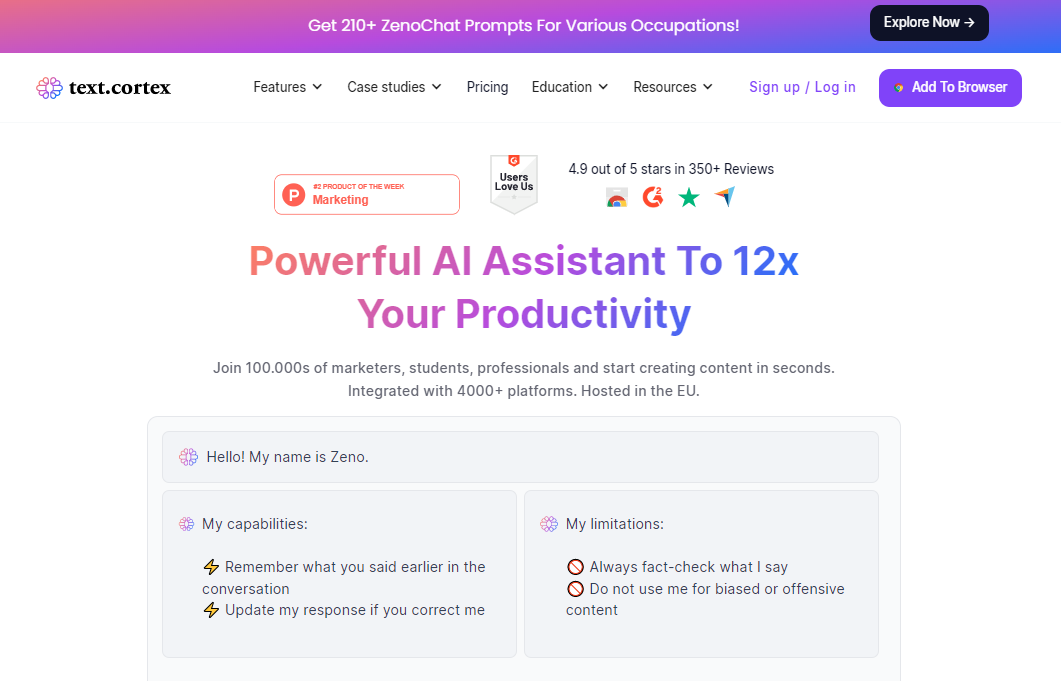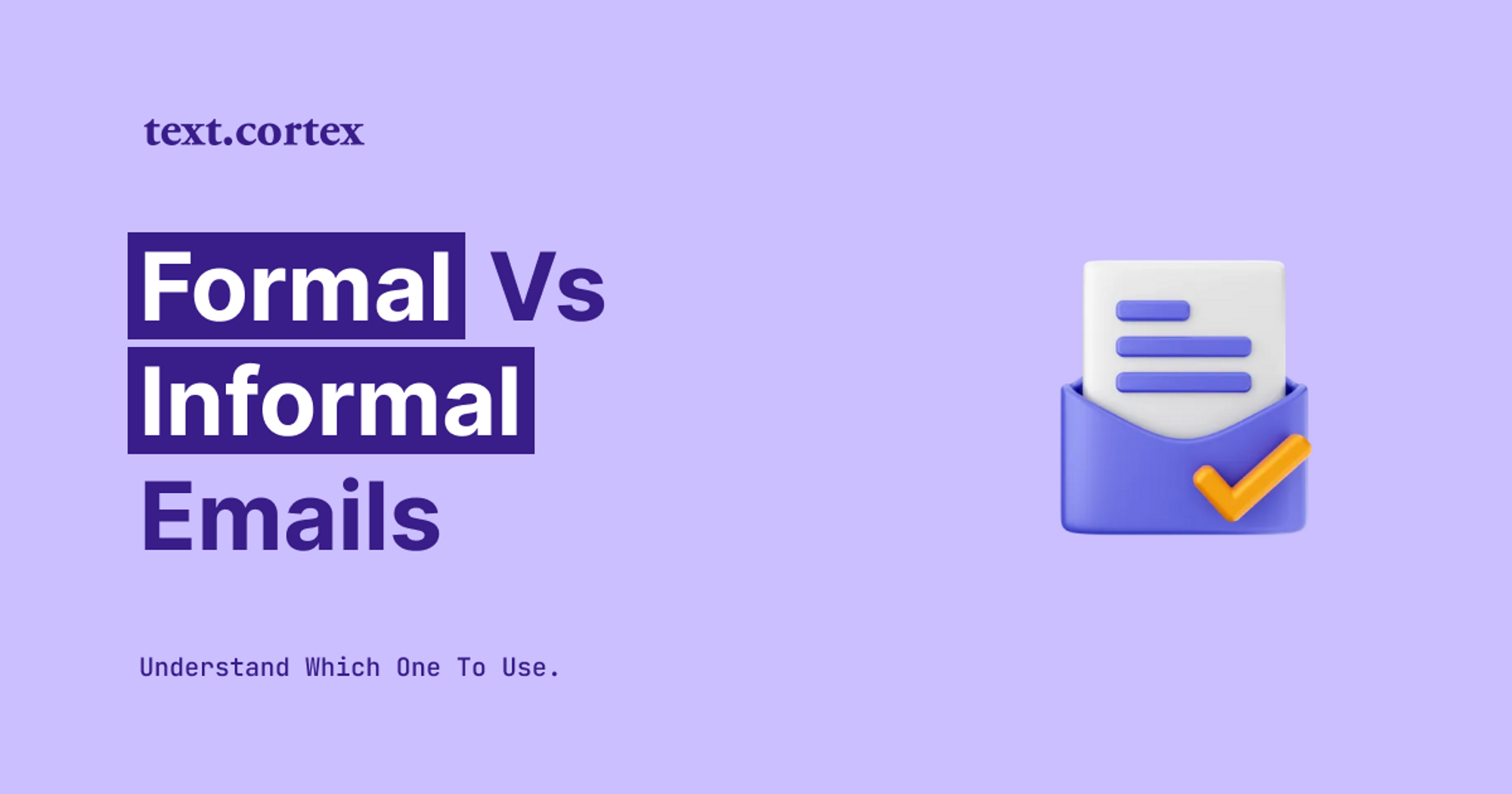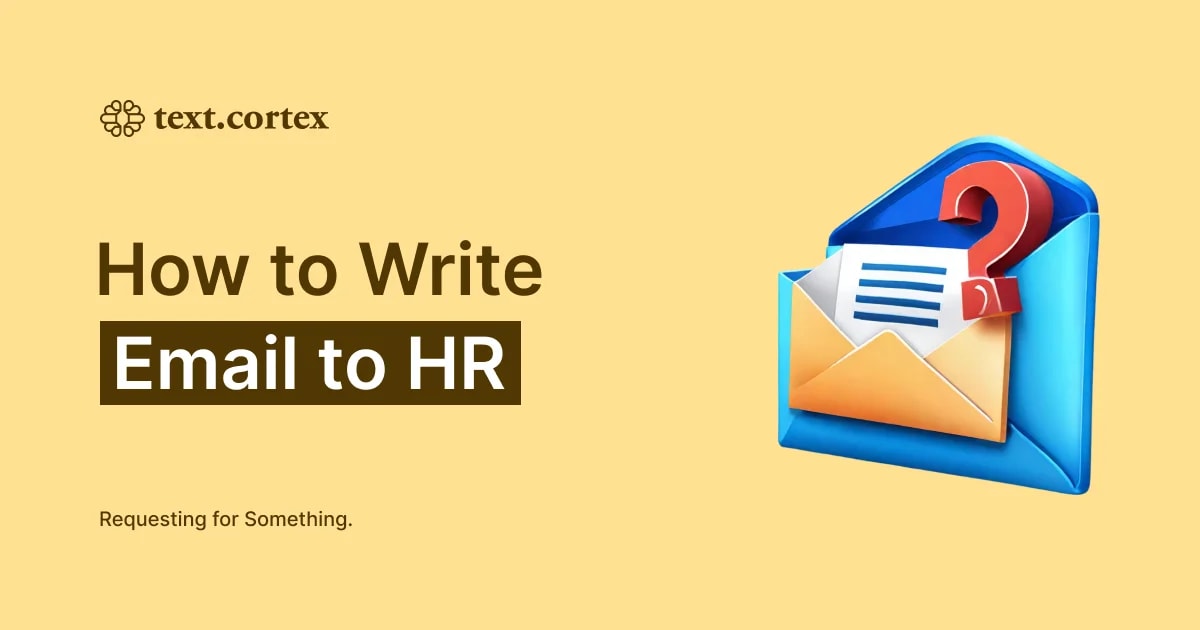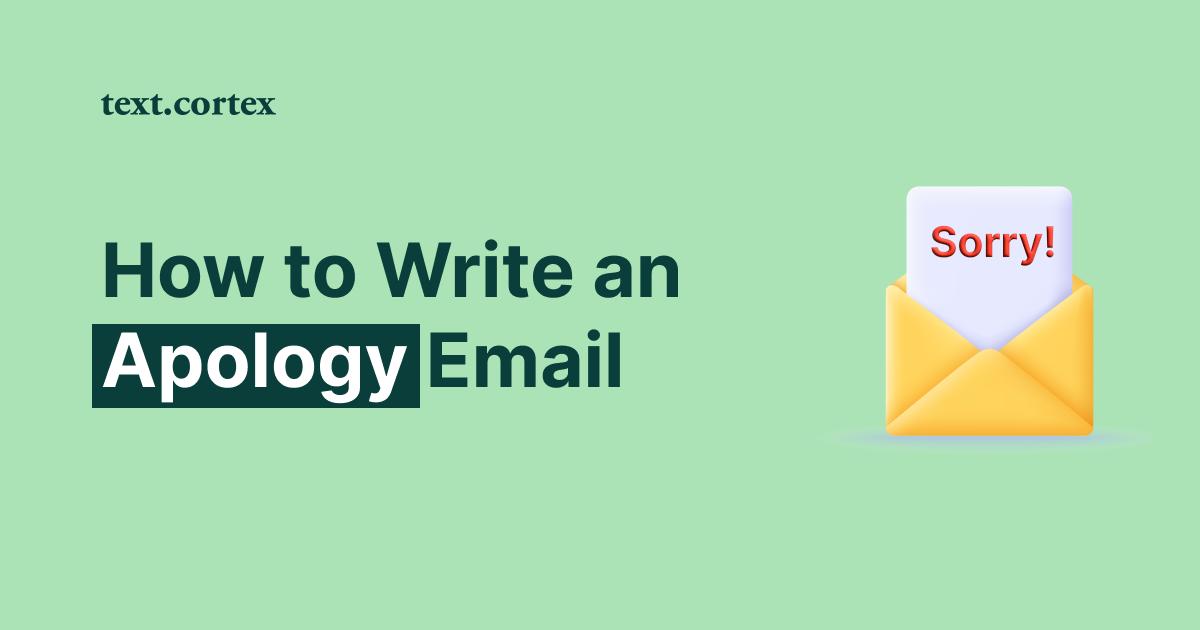Email has surpassed all other forms of private and professional communication in today's digital world.
To communicate effectively in various contexts via email, you must master the art of striking the right tone and style.
So, this article will examine the main distinctions between formal and informal emails, exposing the many functions and norms of each.
It will address formal vs informal email differences, including tone, vocabulary, and structure, and examine their benefits and acceptable uses.
By reading this article and applying what you have learned, you can significantly improve your email communication skills.
Let’s begin!
What are Formal Emails?
When it comes to more demanding or professional situations, like communicating with employers or clients, it's recommended to opt for a formal email.
They adhere to established conventions and guidelines to ensure that your message conveys the appropriate level of respect, professionalism, and clarity to the recipient.
By following these protocols, you can ensure that your intentions are effectively communicated and received in a manner that aligns with the seriousness of the situation.
1. Key Characteristics of Formal Emails
The following are the key guidelines you should stick to while writing formal emails:
1. Salutations
Formal emails usually begin with a formal salutation, such as "Dear Mr./Ms. [Last Name]" or "Dear [Job Title/Position]," followed by a colon.
The use of the recipient's last name and appropriate title adds a level of respect and formality.
2. Polite Tone
Keep your email's tone polite and respectful the whole time.
You should keep the language professional by not using slang, jargon, or words and phrases that are too casual.
Furthermore, grammar, punctuation, and capitalization should be correct, to demonstrate that you are paying close attention to details.
3. Structure and Organization
Formal emails usually have a standard format.
They start with a short, clear introduction, then move on to the main part of the message, and end with a nice close and a formal signature.
For the correct structure of formal emails, use paragraphs to organize content in a way that makes sense and is clear.
4. Professional Language
Formal emails use professional language, like formal words and phrases, and don't use slang.
The message should be clear, to the point, and focused on its main goal.
5. Proper Addressing and Titles
When addressing recipients, formal emails use their full names and appropriate titles (e.g., Mr., Ms., Dr., Prof.).
Here it is important to double-check the spelling and correctness of the names and titles.
6. Use of Formal Closing
Use formal closing, such as "Sincerely," "Best regards," or "Yours faithfully," followed by the sender's full name and contact information.
These closings maintain a professional tone and create a sense of closure.
By following these rules of formal email writing, you can ensure your message is taken seriously and build a professional relationship with the person you are writing to.
2. When To Use Formal Emails?
Formal emails are used in various professional and corporate settings when it is essential to sound authoritative and consistent with established norms.
It is appropriate to use formal emails in the following situations:
🎯 Job applications — Formal job applications require formal emails. They show professionalism, detail, and respect for the hiring manager or recruiter.
🎯 Business proposals — Formal emails are best for business proposals to clients, investors, and partners. They express credibility, professionalism, and seriousness.
🎯 Professional inquiries — Formal emails are best for professional inquiries or communicating with supervisors, professors, or senior executives.
🎯 Client communication — Formal emails in corporate contexts assist in maintaining a professional image.
🎯 Official correspondence — Organizations, government entities, and institutions often send formal emails.
🎯 Networking or introductions — Formal emails are appropriate when networking, introducing, or mentoring other professionals.
🎯 Resolving conflicts or complaints — A professional email can help you resolve a disagreement or complaint.
3. Benefits of Formal Emails
Official emails provide numerous advantages in business and professional settings. Here are some benefits of sending formal emails:
✅ Professionalism — They demonstrate that you take your communication seriously and value a professional tone in your interactions.
✅ Clarity and precision — By using a formal tone, you can ensure that your message is clear, and concise to avoid miscommunication or misunderstandings.
✅ Respect and etiquette — They show that you respect the recipient’s time and speak professionally. This can improve connections with clients, colleagues, and business partners.
✅ Conveying a professional image — When you consistently use a professional tone and style, you are perceived as reliable, competent, and trustworthy.
✅ Documentation and accountability — They create a level of accountability as both parties have a written record of the conversation.
✅ Consistency in business communication — By using a standardized format and professional tone across your emails, you create a cohesive and professional brand image for yourself or your organization.
✅ Legal and contractual purposes — Formal emails can be legal proof in disputes or contracts. These official emails might be used as proof of the agreement or understanding.
Professionalism, clarity, and accountability are just a few of the reasons why formal emails are so useful for business communication, despite the fact that they need a bit more attention to detail and etiquette.
4. Example of a Formal Email
Subject: Inquiry Regarding Business Partnership Opportunity
Dear Mr. Johnson,
I hope this email finds you well. My name is [Your Name], and I am the Business Development Manager at XYZ Company. I am writing to inquire about a potential business partnership between our organizations.
I have researched your company extensively and have been impressed by your expertise in the field of [specific industry]. It is evident that our organizations share similar goals and values, which makes me believe that a collaboration could be mutually beneficial.
We at XYZ Company specialize in [briefly describe your company's expertise and offerings]. We have a proven track record of delivering high-quality solutions to our clients, and we take pride in our commitment to excellence and customer satisfaction.
I am particularly interested in exploring the possibility of working together on [specific project or initiative]. I believe that our combined strengths and resources could lead to a successful outcome and create significant value for both our organizations.
I would appreciate the opportunity to discuss this further and explore potential synergies. Would it be possible to schedule a meeting or a phone call at your convenience? I am available next week on [provide a few options for meeting times], and I am open to any format that suits your preference.
Thank you for considering this inquiry. I look forward to the possibility of collaborating with your esteemed organization. Please feel free to contact me at [your contact information] if you require any additional information or if you have any questions.
Best regards,
[Your Name]
Business Development Manager
XYZ Company
[Your contact information]
What are Informal Emails?
Informal emails are all about being casual and laid-back. They're perfect for personal or informal settings where you don't need to be formal and stiff.
You can let your friendliness shine through and honestly converse with the recipient.
In fact, informal emails often use everyday language, easygoing greetings, and a more flexible structure.
So, feel free to loosen up and make it a relaxed and enjoyable exchange.
1. Key Characteristics of Informal Emails
Informal emails are frequently employed for personal communication among friends, family members, close colleagues, or in informal networking scenarios.
They are well-suited for casual invitations, friendly conversations, reconnecting with acquaintances, or sharing non-work-related information.
While informal emails offer a more relaxed tone, it's crucial to remember the importance of maintaining a respectful and considerate demeanor.
This is especially true when communicating with individuals you aren't familiar with or in professional settings that require a more formal approach.
Some key characteristics of informal emails include:
1. Casual Greetings
You should begin your Informal emails with more relaxed greetings, such as "Hi [First Name]," "Hey," or "Hello [Nickname]."
These greetings reflect a friendly and informal tone, as opposed to the formal salutations used in formal emails.
2. Conversational Tone
Informal emails have a more casual tone compared to formal emails.
They allow slang words, jargon, and casual terms to create a friendly and approachable atmosphere akin to a conversation with a friend or colleague.
3. Relaxed Structure
When writing informal emails, you have more freedom to structure your message.
For example, you can use longer or shorter paragraphs, including bullet points and even emojis, to express your emotions.
Nevertheless, ensuring your message is clear and coherent is crucial.
4. Personal Anecdotes and Stories
Informal emails provide an opportunity to share personal anecdotes, stories, or opinions. They allow for a more expressive and subjective approach to communication, fostering a sense of connection and familiarity with the recipient.
5. Abbreviations and Emoticons
Informal emails may include abbreviations, acronyms, or emoticons to convey emotions, humor, or informality.
However, it's essential to use them sparingly and ensure that the recipient is familiar with the communication style.
6. Closing and Signature
Informal emails often end with a less formal closing, such as "Best," "Cheers," "Take care," or even a simple "Thanks."
Signatures are more personal when they include the sender's name or an abbreviation of it.
2. When Do We Use Informal Emails?
A more informal tone is appropriate or even preferred when writing an email to a friend or family member.
The following are examples of when it is acceptable to use an informal email:
🎯 Personal communication — In most cases, the best recipients of an informal email are people you already know, such as friends, relatives, or acquaintances. They make it easy to keep a friendly mood, an update on personal happenings, carry on light-hearted talks, and keep in touch.
🎯 Social invitations — When inviting friends or acquaintances to casual gatherings, parties, or social events, informal emails are the norm.
They enable you to convey the event's details in a friendly and approachable manner, using casual language and expressions.
🎯 Casual networking — In informal networking situations, such as attending social events, meetups, or informal industry gatherings, using an informal email to follow up with new connections can help maintain the casual and friendly atmosphere established during the initial interaction.
🎯 Personal feedback or recommendations — An informal email can be appropriate if you provide feedback, suggestions, or personal opinions to someone you have a close relationship with, such as a colleague or acquaintance.
🎯 Friendly collaborations — When working together with colleagues or peers on informal projects or initiatives, you can use informal emails to discuss ideas, coordinate efforts, or share updates.
🎯 Non-work-related inquiries — Informal emails are suitable for non-work-related inquiries, such as reaching out to a local business, asking for recommendations, or seeking advice from individuals you have a casual connection with.
🎯 Personal thank-you notes — If you want to show gratitude or thank someone for a personal favor, you can use informal emails.
They provide a more personal and warm way to express your appreciation.
Keep in mind that even in informal emails, it is vital to consider the receiver's preferences and the context of the communication.
Although informal emails can have a relaxed tone, it is crucial always to maintain politeness and kindness when interacting with individuals you are not familiar with.
3. Benefits of Informal Emails
There are many advantages to using informal emails when appropriate, such as:
✅ Establishing a personal connection — Casual emails help build connection. You can develop stronger relationships by employing a casual tone, normal language, and personal tales.
✅ Relaxed and approachable communication — They make conversation more casual and make it easier for recipients to have open, honest interactions in official contexts.
✅ Encouraging open dialogue — Informal emails invite casual responses. In a relaxed setting, people are more likely to speak freely.
✅ Flexibility in expression — They let you communicate emotions, humor, and passion. They let you express yourself more vividly with informal language, acronyms, and emojis.
✅ Ease of writing — Casual emails take less time and effort to write. The conversational tone makes writing more natural and less regimented.
✅ Quick and efficient communication — They focus on the main point without unnecessary formality or justifications. This can speed up communication, especially when brevity is valued.
✅ Flexibility in tone — Informal emails allow you to customize the tone. Your relationship with the recipient determines the level of informality, allowing for a more personalized approach.
✅ Suitable for non-professional contexts —They're good for socializing, networking, and personal questions. They keep the interaction's easygoing and welcoming vibe.
In general, informal emails are advantageous since they allow for more relaxed and friendly conversation, as well as the promotion of personal ties.
By taking use of email's many benefits, you may improve your connections, make communication easier, and even make it fun.
4. Example of an Informal Email
Subject: Movie Night this Friday - Join us for some laughs!
Hey Sarah,
I hope this email finds you well! I wanted to reach out and invite you to a movie night we're hosting at our place this Friday. We're planning to watch a hilarious comedy and thought it would be a great opportunity to catch up and have a good laugh together.
The movie we've chosen is "Super Funny Flick" – it's received rave reviews and promises to be a riot! We'll have plenty of popcorn, snacks, and drinks to keep us entertained throughout the movie. Feel free to bring along any additional munchies or drinks you'd like to share.
The details are as follows:
Date: Friday, [Date]
Time: 7:00 PM
Location: Our place, [Address]
It would be awesome if you could make it! Just let us know if you'll be able to join us, so we can plan accordingly. If you have any questions or need directions, don't hesitate to give me a shout.
Looking forward to spending a fun evening together!
Cheers,
John
Formal vs Informal Emails — How to Get Started?
The tone you want to set and the nature of your relationship with the recipient can determine whether you employ a formal or informal style in an email.
If you are unsure about the level of formality to use in a particular situation, it's best to choose a more formal tone.
This will ensure that your written and spoken communications convey the appropriate level of respect and professionalism.
You can also consider using reliable and advanced tools that provide all the necessary features for writing both professional and informal emails.
Here, we'll present you with TextCortex Zeno's ChatGPT extension.
What is Zeno ChatGPT?

TextCortex's Zeno ChatGPT is an advanced writing tool powered by artificial intelligence.
It utilizes cutting-edge machine learning techniques and a comprehensive knowledge base to assist users in crafting premium, search-engine-optimized content.
This remarkable tool offers support for a wide range of languages, including French, German, Romanian, Portuguese, and many others.
By harnessing its diverse language capabilities, users can fully explore and benefit from the extensive array of features provided by TextCortex such as:
👍 Rewriting toolbar — Rewrite, expand, summarize, alter tone, text-to-speech, etc.
👍 Creator Suite — 60+ AI-generated templates for any content format.
👍 Readability checker— Check your readability score.
👍 Zeno mode — Get AI predictions based on your draft.
👍 Content brainstorming — Press CTRL+SHIFT+K to unlock features for content ideas.
👍 Zeno Chat — Start conversations with our AI writers in 25+ languages.
Furthermore, TextCortex allows seamless integration with over 2000 most popular online platforms, granting you easy accessibility across a multitude of popular services.
Whether it's Docs, Gmail, LinkedIn, Notion, Facebook, or numerous others, TextCortex ensures that you can conveniently utilize its capabilities wherever you need them.
What Are the Benefits for You?
✔️ Accelerated content generation (up to 10 times faster).
✔️ Efficient bulk creation.
✔️ Seamless communication in both formal and informal settings across 25+ languages.
✔️ Enhanced workflow productivity.
✔️ Rapid shaping of your ideas.
✔️ Enjoyable content generation process.
✔️ 10 free daily creations.
✔️ Dedicated customer support for your assistance.
How to Start Using It?
1️. Add Zeno ChatGPT extension.
2️. Create your account.
3️. Start exploring your options.
4️. To earn more free credits, check our reward center.
Ready to give it a try?
Sign up for free to take the next step towards unlocking your writing potential with TextCortex's Zeno ChatGPT.



.png)
